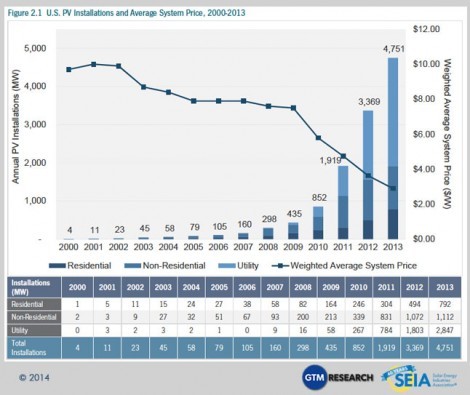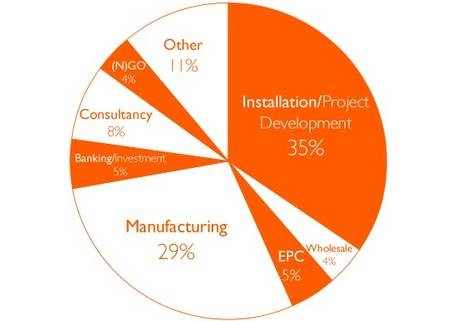Shepherding Solar’s Future Economic sustainability is the key to ‘smart growth’
Post on: 16 Март, 2015 No Comment

To embed, copy and paste the code into your website or blog:
The buzz about solar keeps on growing thanks to a steady stream of media reports about the industrys growth potential. The latest examples, to name just a few, include Duke Energys $500 million solar expansion; solar on landfills and the proliferation of solar carports; and many reports on the potential of perovskite-based panels to dramatically slash costs.
Still, the next couple of years will bring challenges as well.
One of the biggest is figuring out how to keep costs low after 2016, when the 30% solar investment tax credit drops to 10%. While it is heartening that President Obamas fiscal 2016 budget request would make the credit permanent, the assent of Congress in the matter is by no means certain. No doubt about it, this is a tough one for solar. If the tax break tapers as planned, costs are going to have to come down even more for projects to pencil out.
One temptationto start selling lower-quality solar panels that will seem like a better financial deal to end-usersamounts to a shortsighted solution for the industry. And so, barring a dramatic rescue from perovskite or some other wildcard, a trend toward consolidation is a likely consequence of the aforementioned pressures. In a bid to bolster their economies of scale, in other words, larger solar operators will start snapping up their diminutive rivals.
After all, bigger companies happen to be better suited to capitalize on the growing demand for utility-scale solar arrays as well as multi-acre rooftop projects. While homeowners, non-profits, churches and schools will continue to express interest in solar, they will not always be willing or able to do the deal, whether because of sticker shock, too much shade, inadequate rooftop space or all of the above.
Larger projects, favorable economics
By contrast, the larger installs associated with commercial rooftop space, rural utility arrays and community solar projects offer more favorable economics for all parties involved. Utilities, in particular, face strong pressures to continue to invest in large-scale solar projects. Some are staring down the barrel of challenging Renewable Portfolio Standards; others are deeply concerned about the prospect of tighter regulation of coal-fired power plants.
Over the past couple of years, Georgia Power and a raft of local EMCs have invested heavily in massive solar arrays. These build-outs helped catapult Georgia, which lacks the aggressive renewable standards of, say, Massachusetts or California, from 26th in the nation to sixth on the list of states with the most solar capacity. Indeed, solar jobs in the state have leapfrogged by 225%. Meanwhile, the Georgia Assembly is expected to pass legislationHB 57this year that will give both solar companies and utilities a green light to lease solar technology to end users (this has heretofore been considered a violation of state law). If it passes, the legislation will enable Georgia to join the ranks of California, North Carolina, Virginia and other states in which utilities are working to lease more commercial and other rooftop space for solar projects.
Community solar with virtual net metering

Most homes, churches and schools have inadequate rooftop space and too much shade to make installation of rooftop solar an economic win-winparticularly after 2016. On the other hand, community solar with virtual net metering represents an extraordinary opportunity for all of the above to meet their goals.
The time is now for the solar industry to start getting the word out about community solar. That means investing substantially in marketing and educational initiatives geared toward making community solar a household namesomething that energy consumers everywhere can recognize and repeat. Working hand-in-hand with academics, environmentalists, urban planners, technologists, legal expertsyou name itthe solar industry should make a major push on community solar before the tax breaks dwindle.
In the world today it often seems as though problems outnumber solutions tenfold. But the encouraging stories that will emerge with the expansion of community solarpeople buying shares in arrays located in brownfield development sites, say, or atop old automobile factorieswill get headlines aplenty.
We are also moving into an era in which younger Gen Y consumers are less likely to live in big McMansions with adequate rooftop space for panels. For these environmentally minded consumers, community solar offers a tantalizing possibility: living in an urban loft, car-free, while still buying into and benefitting from a solar array. Reporters will love such storylinesbut only if the industry makes them happen. Likewise, the solar industry should reach out to commercial property owners with significant rooftop acreage and encourage them to think of this excess square footage as potentially lucrative gross leasable area.
The basic idea here is to strategically guide the growth of solar in ways that promote not just environmental stewardship, but economic sustainability as well.
Source: Solar Novus Today














